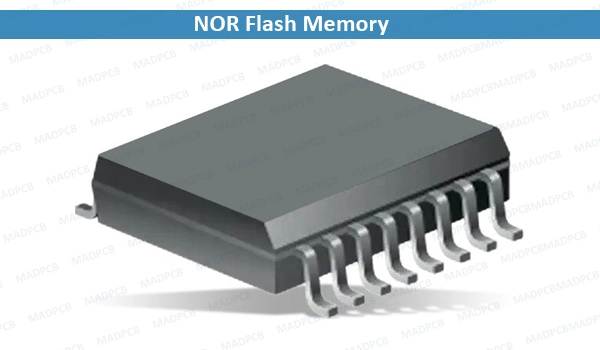
NOR Flash Memory: Architecture, Features, and Applications
Flash memory is a type of non-volatile memory (NVM), meaning it retains data even when power is switched off. It is widely used in embedded systems, mobile devices, and storage applications. Flash memory is broadly classified into NOR Flash and NAND Flash. While NAND flash dominates mass storage applications, NOR flash memory is still significant due to its unique advantages.
For students preparing for competitive exams like GATE, PSU exams, or Electronics/Computer Science interviews, understanding NOR flash is important from both theoretical and application perspectives.
What is NOR Flash Memory?
NOR flash is a type of non-volatile storage device that provides random access to memory cells, similar to traditional RAM. The name “NOR” comes from its internal circuit design, which resembles a NOR gate connection of transistors.
Each cell in NOR flash is connected in parallel, allowing direct addressing of individual memory locations.
Key Features of NOR Flash Memory
Non-volatile – Retains data without power.
Random access – Supports direct code execution (XIP: Execute in Place).
High read speed – Faster than NAND for random read operations.
Write/erase cycle limits – Around 10,000 to 100,000 cycles (less than NAND in density).
Block erase architecture – Data is erased in blocks or sectors, not byte-by-byte.
Low storage density – Costlier per bit compared to NAND.
Good reliability – Robust for applications requiring frequent reads.
NOR vs NAND Flash Memory
| Aspect | NOR Flash | NAND Flash |
|---|---|---|
| Circuit structure | Parallel (NOR gate structure) | Series (NAND gate structure) |
| Access type | Random access (byte-addressable) | Sequential access (page/block) |
| Read speed | Very fast for random reads | Faster for sequential reads |
| Write/erase speed | Slower | Faster |
| Density | Lower | Higher (cheaper per bit) |
| Use case | Code storage (firmware, boot code) | Mass data storage (SSDs, cards) |
| XIP capability | Supported | Not supported |
Architecture of NOR Flash
Floating Gate Transistor – The basic storage element. Charge stored on the floating gate represents binary data (0 or 1).
Word Lines & Bit Lines – Word lines control access to rows, while bit lines connect columns.
Parallel Connection – Each cell is independently connected to the bit line, enabling random access.
Advantages of NOR Flash
Supports direct execution of program code (no need to copy into RAM).
High reliability for read-intensive applications.
Instant random access for small data retrieval.
Ideal for firmware storage in embedded devices.
Disadvantages of NOR Flash
Lower density → higher cost per MB compared to NAND.
Slower write and erase speeds.
Limited endurance (finite program/erase cycles).
Applications of NOR Flash
Embedded Systems – Storing boot code, OS kernels, and firmware.
Mobile Phones – Firmware, baseband code, and low-level programs.
Automotive Electronics – Engine control units, infotainment, and safety systems.
Networking Devices – Routers, switches, and modems for code storage.
Medical Devices – Secure and reliable program storage.
Important Exam Pointers
NOR flash allows random access and direct code execution, unlike NAND.
Mainly used for firmware storage (not bulk storage).
Parallel cell structure resembles a NOR gate → hence the name.
Write/erase cycles are limited (~10^4 to 10^5).
Preferred for read-intensive applications with small storage needs.
Conclusion
NOR flash memory remains relevant despite the dominance of NAND flash in large-capacity storage. Its ability to provide fast random reads and direct code execution makes it the technology of choice for firmware storage, boot loaders, and embedded systems. For competitive exams, remembering its architecture, comparison with NAND, applications, and limitations is crucial.